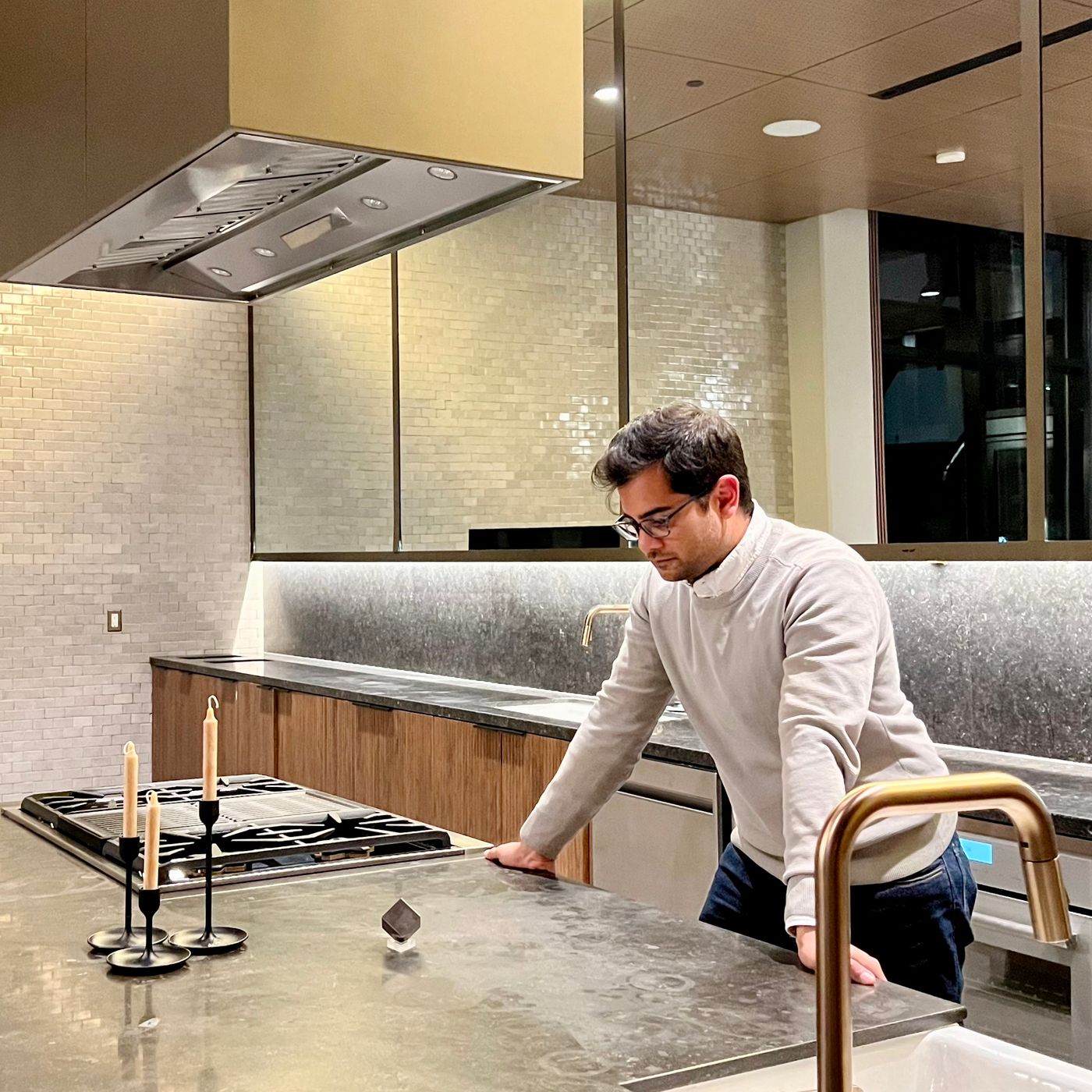First Bitcoin. Then GameStop. Now Tiny Tungsten Cubes.
Online investors crave the tangible pleasure of holding surprisingly heavy metal blocks.
They bought the bitcoin dip. They took GameStop to the moon. Now the online investor army has a new favourite thing to buy and hold: small tungsten cubes.
Even in a year that has featured dog-meme cryptocurrencies and rappers shilling SPACs, tungsten cubes stand out. They are as inert as they sound: gray, an inch or two on each side and 1.7 times as dense as lead. A major selling point, according to Amazon.com’s product page, is that they are “extremely heavy for their size.”
That also is their main source of appeal to crypto bros and other enthusiasts who caused a run on supplies at a major tungsten provider in recent weeks. They are shelling out around $400 apiece for 2-inch cubes weighing around 5 pounds, or $3,000 for the 4-inch version as heavy as a low-horsepower outboard motor—and almost three times the price.
While cube enthusiasts overlap with aficionados of ephemeral varieties of digital money prone to heart-stopping swings in value, their new paperweights, given their density, are among the most-tangible things on earth. Tungsten has one of the highest tensile strengths and melting points among metals.
Drew Morris, a 35-year-old Florida lawyer at a blockchain intelligence company, bought his 1½-inch cube after friends came across it on Twitter and in Telegram group chats. He found the density mind-blowing.
“I keep it on my desk as a reminder of what motivates me—keep going, keep working,” said Mr. Morris, who also invests in cryptocurrencies. “One day, I’ll be able to upgrade to a larger-size cube.”
Cubists like Mr. Morris got recent inspiration from a niche corner of online life: financial Twitter. Fintwit, as it is called, typically consists of investors small and large debating the direction of markets, the prospects for inflation and recipes for grilled meats. Lately, photos of smoked brisket have given away to pictures of cubes.
Nic Carter, founding partner at the blockchain-focused venture-capital firm Castle Island Ventures, describes himself in his twitter bio as the “original tungpiller.” He said the physical heft of the cubes contrasts with the intangible nature of cryptomarkets.
“We’re just deprived of physical totems of our affection, and so tungsten fills that hole in our hearts,” he said.
Demand intensified after Neeraj K. Agrawal, director of communications at Coin Center, a nonprofit cryptocurrency research and advocacy group, posted a joke mock-up of a faked Bloomberg News story claiming crypto traders were behind an imaginary global tungsten shortage.
“I’m gonna be buried with my cube probably,” said Mr. Agrawal. “It will be like a pharaoh buried with his possessions, so the cube will have a place of honor.”
Cube enthusiasts often describe them in quasimystical terms. “You kind of start wondering about gravity and the forces of nature, and it can send you on an out-there-wandering experience,” said Rabbi Michael Caras, an Albany-based Jewish day-school teacher, who uses the twitter handle @thebitcoinrabbi. He owns a 1½-inch cube.
“It’s kind of like a disconnect between what your eyes are seeing and what you’re feeling and what you expect from something that fits in the palm of your hand,” he said.
There is a rallying cry: “We like the cube.” That’s a play on the phrase “We like the stock,” often used on sites such as Reddit’s WallStreetBets to show support for buying shares of GameStop Corp., AMC Entertainment Holdings Inc. or other meme stocks.
The hype sparked a surge in demand at Midwest Tungsten Service Inc., which sells the cubes, along with tungsten in various industrial forms for use in things such as wiring and cutting tools. Midwest Tungsten General Manager Kevin Anetsberger said the $6 billion to $9 billion global tungsten market can support the burgeoning demand for cubes, though the company did need to replenish inventories.
“The universal response whenever we’ve had anybody in our facility, and we’ve handed them tungsten to hold, it’s kind of astonishment,” said Mr. Anetsberger, a 36-year veteran of the company.
While Mr. Anetsberger won’t comment on how much Midwest Tungsten has made from the recent sales, it last week began accepting payments in bitcoin. The first order arrived eight minutes later.
An anonymous group of crypto advocates recently minted 500 digital cubes as nonfungible tokens—unique digital identifiers that have powered this year’s boom in sales of digital collectibles and art, such as NBA Top Shot and the American artist Beeple’s $69 million “Everydays: The First 5,000 Days.” The tungsten NFTs, already sold out, entitle holders to a single real cube of equivalent size. Proceeds go to crypto advocacy groups, including Mr. Agrawal’s Coin Center.
Midwest Tungsten recently launched an NFT of a 14-inch cube weighing almost 1,800 pounds. Buy an NFT and you can visit the cube once a year. On social media, the company requested photos of the cubes in their new homes. “Is it an only-cube?” the firm tweeted.
Daniel Matuszewski, co-founder of cryptocurrency investment firm CMS Holdings, asked Midwest Tungsten to make a 7-inch cube engraved with the company’s name in comic sans. Mr. Matuszewski said the roughly 230-pound cube should arrive sometime around the winter holidays. All in, the company has spent more than $50,000 on branded cubes, he said.
“We have a pretty interesting fight going on internally, whether or not somebody is actually going to be able to pick that up,” Mr. Matuszewski said.
Midwest Tungsten also sells tungsten spheres.
Mr. Morris, the Florida lawyer, isn’t much interested. “We like the cube,” he said.
Reprinted by permission of The Wall Street Journal, Copyright 2021 Dow Jones & Company. Inc. All Rights Reserved Worldwide. Original date of publication: October 28, 2021.
 Copyright 2020, Dow Jones & Company, Inc. All Rights Reserved Worldwide. LEARN MORE
Copyright 2020, Dow Jones & Company, Inc. All Rights Reserved Worldwide. LEARN MORE
This stylish family home combines a classic palette and finishes with a flexible floorplan
Just 55 minutes from Sydney, make this your creative getaway located in the majestic Hawkesbury region.
Continued stagflation and cost of living pressures are causing couples to think twice about starting a family, new data has revealed, with long term impacts expected
Australia is in the midst of a ‘baby recession’ with preliminary estimates showing the number of births in 2023 fell by more than four percent to the lowest level since 2006, according to KPMG. The consultancy firm says this reflects the impact of cost-of-living pressures on the feasibility of younger Australians starting a family.
KPMG estimates that 289,100 babies were born in 2023. This compares to 300,684 babies in 2022 and 309,996 in 2021, according to the Australian Bureau of Statistics (ABS). KPMG urban economist Terry Rawnsley said weak economic growth often leads to a reduced number of births. In 2023, ABS data shows gross domestic product (GDP) fell to 1.5 percent. Despite the population growing by 2.5 percent in 2023, GDP on a per capita basis went into negative territory, down one percent over the 12 months.
“Birth rates provide insight into long-term population growth as well as the current confidence of Australian families,” said Mr Rawnsley. “We haven’t seen such a sharp drop in births in Australia since the period of economic stagflation in the 1970s, which coincided with the initial widespread adoption of the contraceptive pill.”
Mr Rawnsley said many Australian couples delayed starting a family while the pandemic played out in 2020. The number of births fell from 305,832 in 2019 to 294,369 in 2020. Then in 2021, strong employment and vast amounts of stimulus money, along with high household savings due to lockdowns, gave couples better financial means to have a baby. This led to a rebound in births.
However, the re-opening of the global economy in 2022 led to soaring inflation. By the start of 2023, the Australian consumer price index (CPI) had risen to its highest level since 1990 at 7.8 percent per annum. By that stage, the Reserve Bank had already commenced an aggressive rate-hiking strategy to fight inflation and had raised the cash rate every month between May and December 2022.
Five more rate hikes during 2023 put further pressure on couples with mortgages and put the brakes on family formation. “This combination of the pandemic and rapid economic changes explains the spike and subsequent sharp decline in birth rates we have observed over the past four years,” Mr Rawnsley said.
The impact of high costs of living on couples’ decision to have a baby is highlighted in births data for the capital cities. KPMG estimates there were 60,860 births in Sydney in 2023, down 8.6 percent from 2019. There were 56,270 births in Melbourne, down 7.3 percent. In Perth, there were 25,020 births, down 6 percent, while in Brisbane there were 30,250 births, down 4.3 percent. Canberra was the only capital city where there was no fall in the number of births in 2023 compared to 2019.
“CPI growth in Canberra has been slightly subdued compared to that in other major cities, and the economic outlook has remained strong,” Mr Rawnsley said. “This means families have not been hurting as much as those in other capital cities, and in turn, we’ve seen a stabilisation of births in the ACT.”
This stylish family home combines a classic palette and finishes with a flexible floorplan
Just 55 minutes from Sydney, make this your creative getaway located in the majestic Hawkesbury region.






















